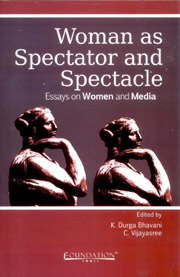Book contents
- Frontmatter
- Contents
- Notes on Contributors
- Preface
- Introduction
- Part I Media and Gender (In)Justice
- 1 Wanted: A Gender Perspective on Media Globalisation
- 2 Media Texts for Women by Women
- 3 Media-ting ‘Patriarchy’
- 4 The Endangered Gender: Images of Women in Advertisements
- 5 Woman in Visual Media: The Spectator vs. the Spectacle
- 6 Two Faces of Women on Television: Need for a Gender Policy
- Part II Framing Women
4 - The Endangered Gender: Images of Women in Advertisements
from Part I - Media and Gender (In)Justice
Published online by Cambridge University Press: 05 November 2011
- Frontmatter
- Contents
- Notes on Contributors
- Preface
- Introduction
- Part I Media and Gender (In)Justice
- 1 Wanted: A Gender Perspective on Media Globalisation
- 2 Media Texts for Women by Women
- 3 Media-ting ‘Patriarchy’
- 4 The Endangered Gender: Images of Women in Advertisements
- 5 Woman in Visual Media: The Spectator vs. the Spectacle
- 6 Two Faces of Women on Television: Need for a Gender Policy
- Part II Framing Women
Summary
The global review observation of 1980 states, “A consistent picture emerges from those research studies which have investigated the media's portrayal of women. At the very best, the portrayal is narrow; at worst it is unrealistic, demeaning and damaging.” (Gallagher, 1981)
Media has erased the geographical distances and is now an integral part of man's living space. The impact of visual media as well as print media on the mind of the viewers and readers is tremendous. This necessitates looking into the coding and construction of femininity and whether or not it reflects reality. This essay will attempt to examine the images of women in newspaper advertisements and television commercials.
We often feel that there exists a disparity between women's actual lives and their representations in the media. This disparity exists, as the images of women in media seem to be a male fantasy and not a living reality. It is therefore necessary to understand how media constructs femininity. In the book, Affirmation and Denial: Construction of Femininity on Indian Television (1990), Prabha Krishnan and Anita Dighe refer to the complexity of women and media interaction, which is an outcome of the production of self-consciousness by media and society. Media as an organization seems to consolidate patriarchal ideology and define femininity. Decoding the content by analyzing images, is an attempt to question that ideology, which has commodified women and stereotyped them.
- Type
- Chapter
- Information
- Woman as Spectator and SpectacleEssays on Women and Media, pp. 34 - 39Publisher: Foundation BooksPrint publication year: 2010

